
Chetone is a genus of tiger moths in the family Erebidae. The genus was erected by Jean Baptiste Boisduval in 1870.
Eurylomia is a genus of moths in the subfamily Arctiinae. The genus was described by Felder in 1874.
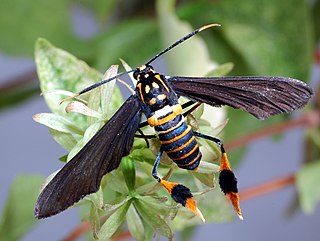
Horama is a genus of tiger moths in the family Erebidae first described by Jacob Hübner in 1819.
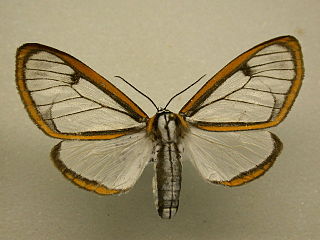
Hyalurga is a genus of tiger moths in the family Erebidae. The genus was erected by Jacob Hübner in 1819.

Zygaena is a genus of moths in the family Zygaenidae. These brightly coloured, day-flying moths are native to the West Palearctic.

Ithomiini is a butterfly tribe in the nymphalid subfamily Danainae. It is sometimes referred to as the tribe of clearwing butterflies or glasswing butterflies. Some authors consider the group to be a subfamily (Ithomiinae). These butterflies are exclusively Neotropical, found in humid forests from sea level to 3000 m, from Mexico to Argentina. There are around 370 species in some 40–45 genera.

Notophyson is a genus of moths in the subfamily Arctiinae erected by Jean Baptiste Boisduval in 1870.
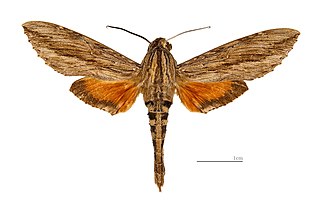
Dilophonotini is a tribe of moths of the family Sphingidae described by Hermann Burmeister in 1878.
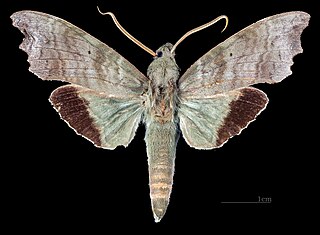
Aleuron is a genus of moths in the family Sphingidae first described by Jean Baptiste Boisduval in 1870.
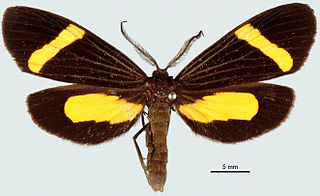
Lyces is a genus of moths of the family Notodontidae erected by Francis Walker in 1854. It consists of the following species:
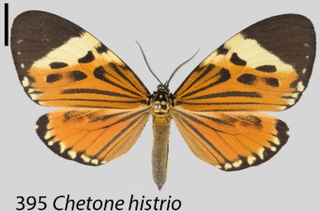
Chetone histrio, or Boisduval's tiger, is a moth of the family Erebidae. It was described by Jean Baptiste Boisduval in 1870. It is found in Honduras, Guatemala and Peru.

Dysschema arema is a moth of the family Erebidae first described by Jean Baptiste Boisduval in 1870. It is found in Nicaragua, Venezuela, Peru, Brazil and Ecuador.
Cyanopepla jalifa is a moth of the subfamily Arctiinae. It was described by Jean Baptiste Boisduval in 1870. It is found in Mexico and Honduras.
Eurylomia ochreata is a moth of the subfamily Arctiinae first described by Herbert Druce in 1885. It is found in Honduras.
Hyalurga sora is a moth of the family Erebidae. It was described by Jean Baptiste Boisduval in 1870. It is found in Mexico, Guatemala and Panama.
Mydromera notochloris is a moth of the subfamily Arctiinae. It was described by Jean Baptiste Boisduval in 1870. It is found in Costa Rica, Guatemala, Honduras, Nicaragua and Colombia.
Poliopastea clavipes is a moth in the subfamily Arctiinae. It was described by Jean Baptiste Boisduval in 1870. It is found from Texas, Mexico, Guatemala and Costa Rica to Venezuela.

Ptychoglene sanguineola is a moth in the subfamily Arctiinae. It was described by Jean Baptiste Boisduval in 1870. It is found in Arizona, Mexico and Guatemala.











